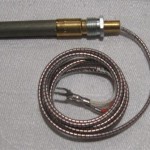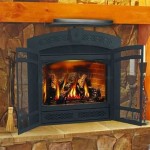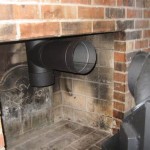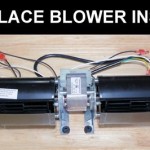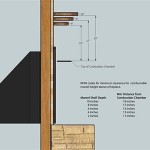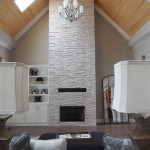Outdoor Fireplace Designs For Small Spaces
Designing an outdoor space that is both functional and aesthetically pleasing can be a rewarding endeavor, particularly when dealing with limited square footage. One element that can significantly enhance the ambiance and usability of a small outdoor area is an outdoor fireplace. Selecting the right design is crucial for maximizing space while still achieving the desired warmth and visual appeal. This article explores various outdoor fireplace designs suitable for small spaces, considering key aspects such as materials, dimensions, functionality, and safety recommendations.
Understanding Spatial Constraints and Design Considerations
Before embarking on the selection or construction of an outdoor fireplace, it is imperative to thoroughly assess the available space. Careful measurement of the area is essential to determine the maximum footprint the fireplace can occupy without overwhelming the surroundings. Consider the overall layout of the outdoor space and how the fireplace will integrate with existing features such as patios, decks, or garden beds. The selection of materials should harmonize with the existing aesthetic to create a cohesive design.
In small spaces, verticality becomes a valuable asset. Tall, narrow fireplace designs can provide a significant visual impact without consuming excessive ground space. Corner fireplaces are another advantageous option, as they can effectively utilize areas that are often underutilized. These positioning strategies can leave more of the central space free for seating and other activities.
Functionality is another focal point. Ask yourself how the fireplace will be used. Is it primarily for aesthetic purposes, or will it serve as a focal point for outdoor cooking? This will inform the choice between a simple fire pit style versus designs incorporating features like grilling surfaces or storage for wood.
Local building codes and regulations concerning outdoor fireplaces must be carefully considered. This includes adherence to setback requirements from property lines, proximity to combustible materials, and permits required for construction. Prior consultation with local authorities is advisable to ensure compliance and avoid potential setbacks.
Types of Outdoor Fireplaces Suitable for Small Spaces
Several types of outdoor fireplaces are well-suited for compact areas, each offering unique advantages in terms of aesthetics, functionality, and spatial efficiency.
Pre-fabricated Fire Pits: Pre-fabricated fire pits are typically the most budget-friendly and straightforward option. They are available in a variety of materials, shapes, and sizes, allowing for easy integration into diverse outdoor settings. Options include metal, stone, or composite materials. Their portability is a significant advantage, as they can be easily relocated as needed. However, pre-fabricated fire pits may not offer the same level of design customization as other options.
Corner Fireplaces: Corner fireplaces are designed to fit snugly into a corner of a patio or deck, maximizing space utilization. These can be custom-built or pre-fabricated and are often constructed from brick, stone, or concrete. Corner fireplaces can offer a more permanent and substantial aesthetic compared to fire pits. However, their installation can be more complex, potentially requiring professional assistance.
Outdoor Fireplace Kits: Outdoor fireplace kits provide a middle ground between pre-fabricated and custom-built options. These kits typically include all the necessary components to construct a fireplace, along with detailed instructions. They offer a degree of customization in terms of materials and design, while simplifying the construction process. Kits are available in various sizes and styles, catering to different spatial constraints and aesthetic preferences. Some kits feature a modular design, which makes assembly more straightforward.
Freestanding Chimineas: Chimineas are traditionally made of clay or cast iron, offering a rustic and charming aesthetic. Their vertical design makes them ideal for small spaces, as they occupy minimal ground area. Chimineas are effective at directing smoke upwards, reducing the likelihood of smoke blowing into seating areas. However, they typically have a smaller firebox compared to other fireplace types, limiting the size of the fire that can be built.
Wall-Mounted Fireplaces: Wall-mounted fireplaces are an innovative solution for extremely limited spaces. They are typically powered by gas or electricity and can be installed directly onto a wall or fence, freeing up valuable floor space. Wall-mounted fireplaces offer a modern and sleek aesthetic and are often equipped with features such as adjustable flame height and heat output. However, their heat output may be less substantial compared to traditional wood-burning fireplaces.
Material Selection and Aesthetic Considerations
The choice of materials plays a crucial role in the overall aesthetic and functionality of an outdoor fireplace. The materials should complement the existing architectural style of the home and the surrounding landscape. Furthermore, materials must be durable and weather-resistant to withstand the elements. Common material options include:
Brick: Brick offers a classic and timeless aesthetic, providing excellent durability and heat retention. Brick fireplaces can be customized with different bonding patterns and colors to achieve a unique look. Brick is a relatively low-maintenance material, requiring minimal upkeep.
Stone: Stone offers a natural and rustic aesthetic, blending seamlessly with outdoor environments. Stone fireplaces can be constructed from various types of stone, including river rock, flagstone, or fieldstone. Stone provides excellent heat retention and durability. However, the cost of stone can be higher compared to other materials.
Concrete: Concrete offers a modern and minimalist aesthetic. Concrete fireplaces can be cast into various shapes and sizes, allowing for design flexibility. Concrete is a durable and low-maintenance material. Moreover, concrete can be stained or painted to match the surrounding decor.
Metal: Metal, such as steel or cast iron, is often used in pre-fabricated fire pits and chimineas. Metal offers a sleek and contemporary aesthetic. Metal fireplaces are typically lightweight and portable. However, metal can be prone to rusting if not properly maintained.
Tile: Tile can be used to enhance the aesthetic appeal of fireplace surrounds. Tile is available in a wide range of colors, patterns, and textures, allowing for design customization. Tile is a durable and easy-to-clean material.
The color palette of the fireplace should harmonize with the overall color scheme of the outdoor space. Neutral tones, such as gray, beige, or brown, tend to blend well with various landscapes. Accent colors can be incorporated through the use of decorative stones or tiles.
Safety Precautions and Maintenance
Safety is paramount when operating an outdoor fireplace, particularly in small spaces where proximity to structures and vegetation may be closer. Observe the following safety precautions:
Clearance: Maintain a safe clearance distance between the fireplace and any combustible materials, such as fences, trees, or furniture. Consult local building codes for specific clearance requirements. A general guideline is to maintain a minimum clearance of 10 feet from any structure.
Supervision: Never leave a fire unattended. Always supervise the fire until it is completely extinguished.
Fire Extinguisher: Keep a fire extinguisher or a bucket of water readily available in case of emergency.
Wind Conditions: Avoid using the fireplace on windy days, as strong winds can carry embers and potentially ignite surrounding vegetation.
Spark Arrestor: Install a spark arrestor on the chimney or flue to prevent embers from escaping and causing fires.
Fuel Storage: Store firewood away from the fireplace to prevent accidental ignition.
Regular maintenance is essential to ensure the safe and efficient operation of the outdoor fireplace. Regular maintenance tasks include:
Cleaning: Clean the firebox regularly to remove ash and debris. This will improve airflow and prevent the buildup of creosote, which is a flammable substance that can lead to chimney fires.
Inspection: Inspect the fireplace for any signs of damage, such as cracks or loose stones. Repair any damage promptly to prevent further deterioration.
Chimney Sweeping: Have the chimney professionally swept annually to remove creosote buildup. This is particularly important for wood-burning fireplaces.
Material Treatment: Apply a sealant to stone or concrete fireplaces to protect them from weathering and stains. Metal fireplaces should be treated with a rust-resistant coating.
By adhering to these safety precautions and maintenance guidelines, homeowners can ensure the safe and enjoyable use of their outdoor fireplace for years to come.
Enhancements and Accessories
Several enhancements and accessories can further enhance the functionality and aesthetic appeal of an outdoor fireplace.
Fireplace Screens: Fireplace screens provide an additional layer of safety by preventing sparks and embers from escaping the firebox. They are available in various styles and materials to complement the fireplace design.
Grilling Grates: Grilling grates can be added to wood-burning fireplaces to allow for outdoor cooking. These grates provide a convenient surface for grilling burgers, steaks, vegetables, and other foods.
Fireplace Tools: Fireplace tools, such as pokers, shovels, and tongs, are essential for safely tending to the fire. These tools are typically made of metal and are designed to withstand high temperatures.
Seating: Comfortable seating is essential for creating a welcoming outdoor space around the fireplace. Consider adding outdoor chairs, benches, or a sectional sofa to provide ample seating for guests.
Lighting: Outdoor lighting can enhance the ambiance of the space and provide illumination for nighttime gatherings. String lights, lanterns, or spotlights can be used to create a warm and inviting atmosphere.
Landscaping: Landscaping can be used to create a visually appealing backdrop for the fireplace. Consider adding trees, shrubs, flowers, or decorative rocks to enhance the overall aesthetic of the outdoor space.
Storage: Built-in storage can be incorporated into the fireplace design to provide convenient storage for firewood, tools, and other accessories. Storage can be integrated into the base of the fireplace or in nearby structures.

25 Outdoor Fireplace Ideas Fireplaces Fire Pits

Design Décor Backyard Fireplace Outdoor Patio

10 Outdoor Fireplace Ideas You Ll Want To Copy Bob Vila
:strip_icc()/101920200-baed8059df7e41babeda881d54413a4b.jpg?strip=all)
These 10 Firepit Seating Ideas Will Make Your Outdoor Space Cozy

30 Outdoor Fireplace Ideas Cozy Fireplaces

Cozy Outdoor Fireplace Ideas For Small Spaces

How To Build An Outdoor Fireplace Step By Guide Buildwithroman

Sizzling Style How To Decorate A Stylish Outdoor Hangout With Fireplace Decoist

Diy Outdoor Fireplace Ideas

Creative Outdoor Fireplace Designs And Ideas
Related Posts

